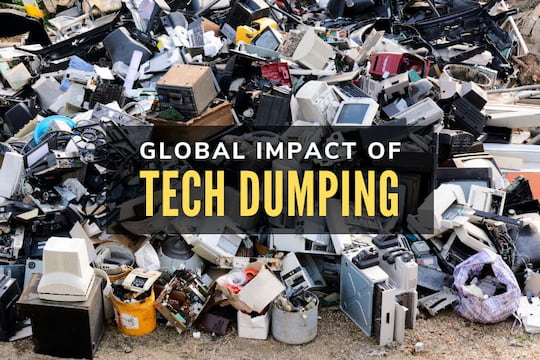There is no denying that e-waste disposal is a global problem, especially with the growing number of health issues that are caused by pollution in the air and contamination of our drinking water. Global e-waste dumping has been a recurring problem faced by many third world countries including China, India, and Africa. Tons and tons of electronic waste are dumped and disposed of in landfills and incinerators every year in the United States. Equally threatening is the exportation of e-waste to developing countries around the world mainly to Guiyu, China. It has been reported that the United States alone exports more than half of its e-waste to China. Irresponsible and poor e-waste management directly harms China’s population and pollutes their environment. An overwhelming majority of electronics and digital devices contain toxic chemicals namely lead and mercury, which can significantly threaten one’s health and cause significant defects and damage to the respiratory, reproductive, and/or nervous system. As we become more technologically advanced, more old electronics will be discarded and exported to developing countries as waste. Once transported to these developing countries, the e-waste will likely end up in recycling centers operated right in people’s backyards.
Unlike the United States, China uses outdated and inadequate recycling methods to process and manufacture old and used electronics. For example, to handle useless plastic, glass, and or heavy metal materials, migrant workers would often burn or incinerate plastic casings or directly dump acid from heavy metal components into the river or irrigation ditches. A vast majority of e-waste is exported to China and Nigeria from North America. According to the Basel Action Network (BAN), e-waste is processed and dumped into rivers near residential homes in Guangdong Province in China. Components of an old or broken circuit board are often handled in a crude and unsafe manner. This is because China lacks the technology and resources that enable them to recycle and re-manufacture electronic waste properly. Although the United States has the technology and resources to recycle e-waste properly and carefully, the U.S. still chooses to export some of its e-waste to developing countries around the world due to their cheap labor.
Because China and other poverty-stricken countries lack a regulated e-waste recycling infrastructure, they will inevitably continue to face dangerous living conditions and a life-threatening environment. Surprisingly, most of the e-waste exported to these emerging countries are not in a reusable condition and are often non-repairable. Therefore, waste is regularly being dumped into landfills and rivers. Many environmental groups blame the U.S. government for their ignorance and poor regulation of e-waste exportation. At the same time, the re-manufacturing and processing of e-waste can improve the economy as it creates employment opportunities for migrant workers but only at the expense of China’s health and environment. Without adequate and sustainable e-waste management practices and a strict import ban policy, developing countries will continue to face health and environmental challenges due to global dumping.




















